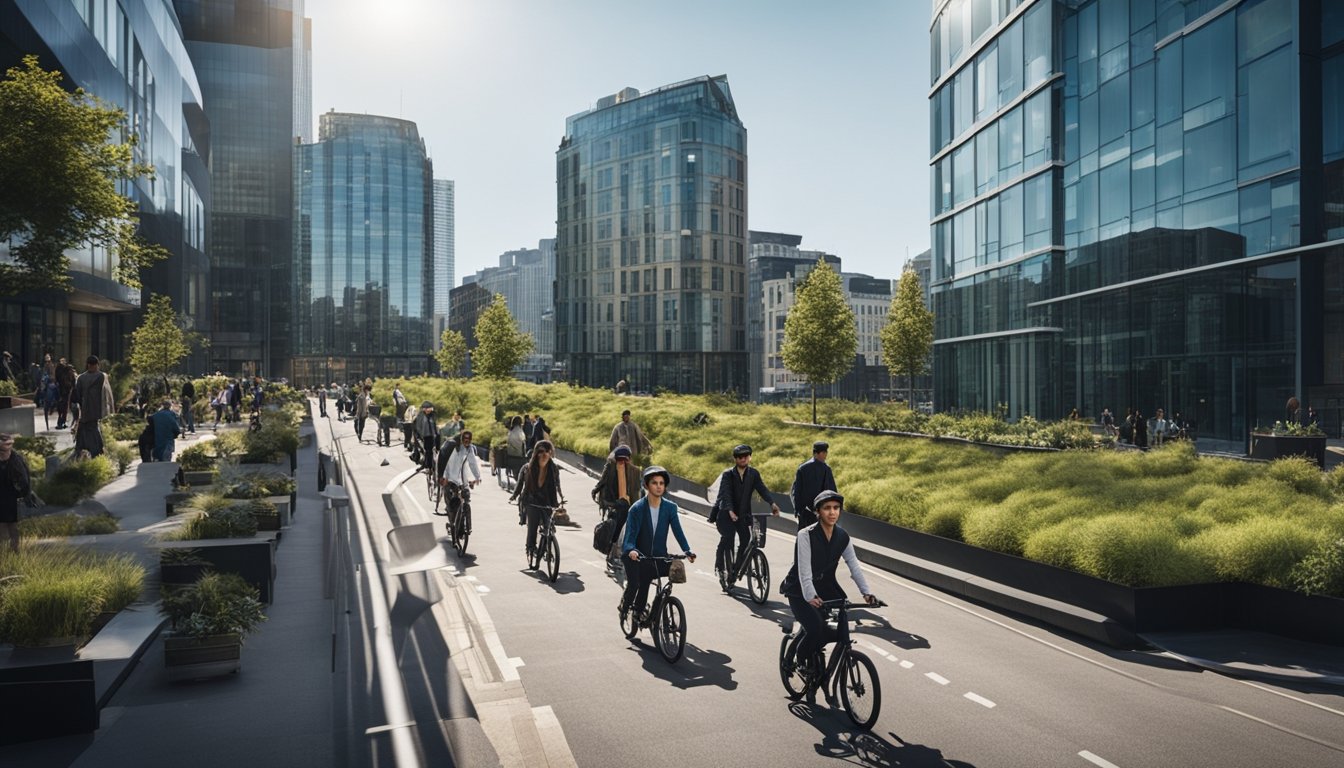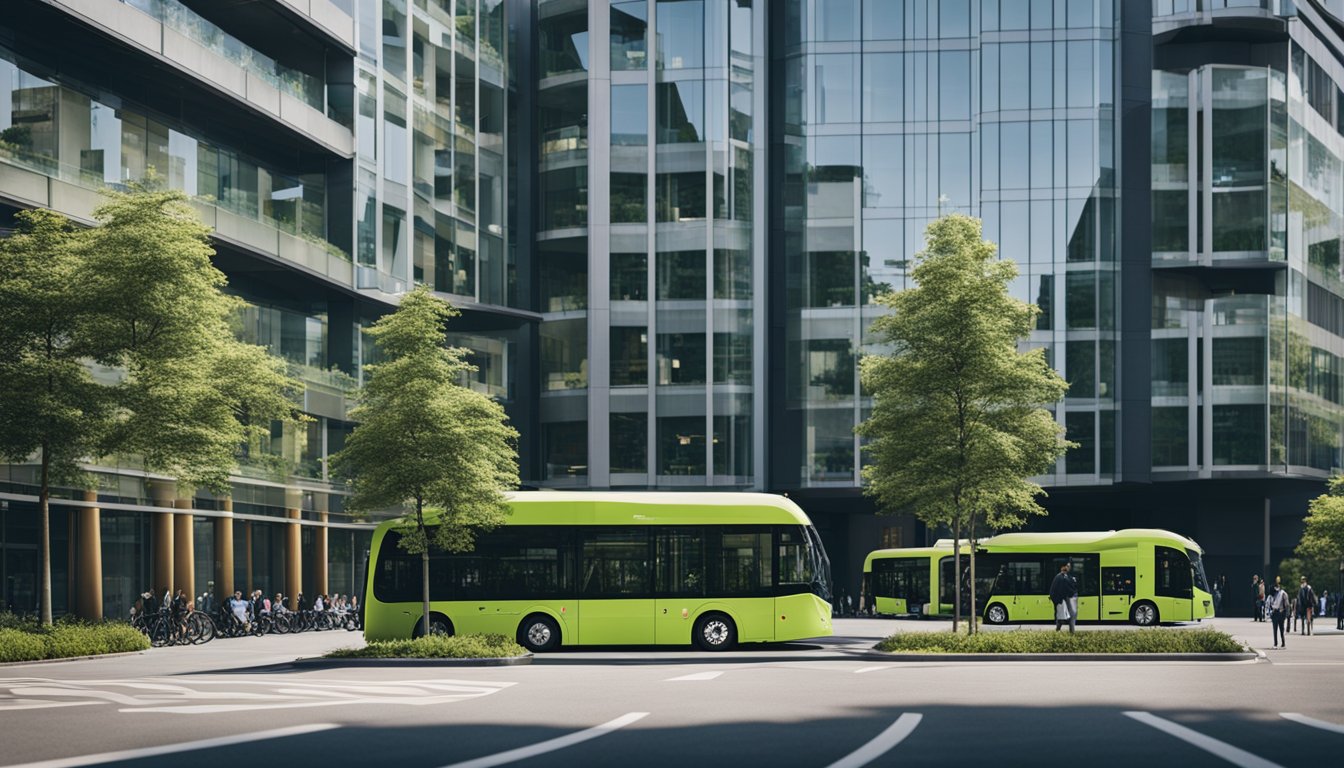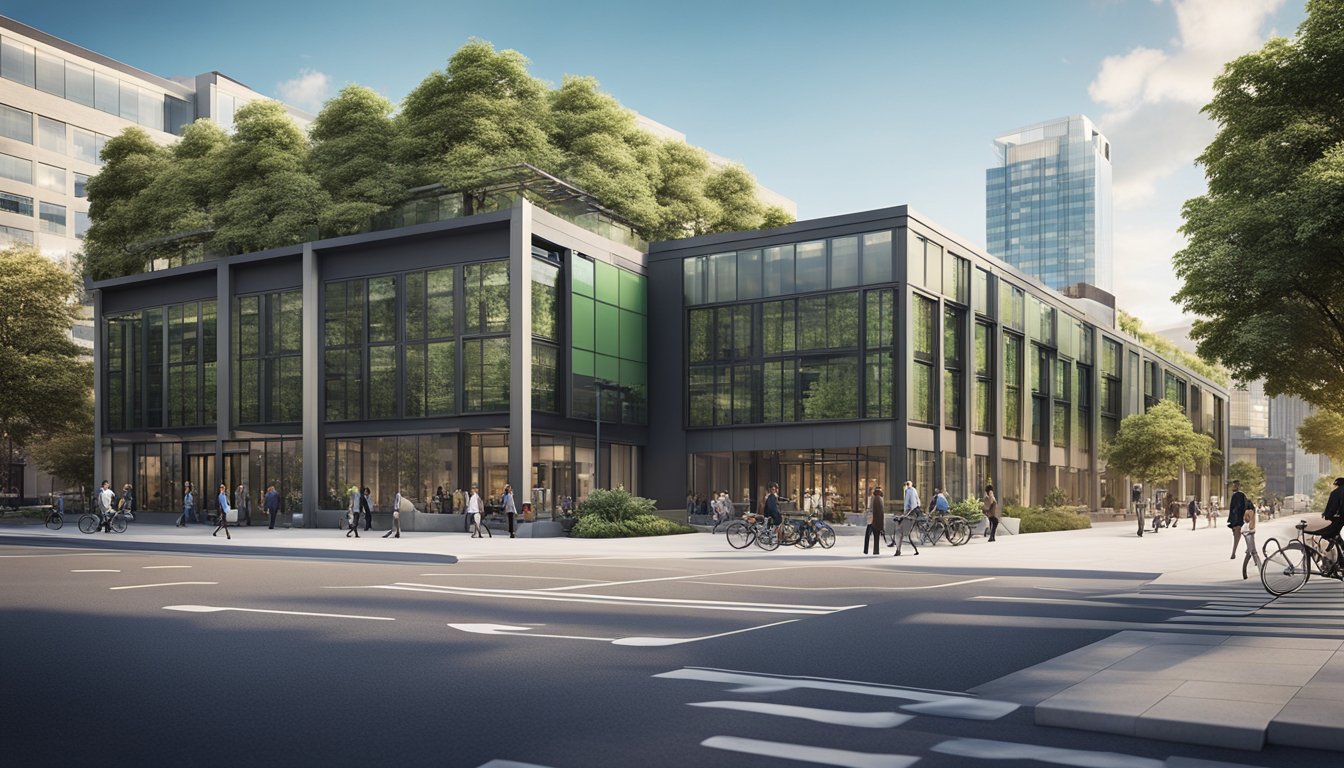Late updated: 17 Nov 2024 08:11
Written by: Amber Collins
Green Commuting Strategies for Urban UK Offices: Transforming Workplace Travel
In the bustling urban landscape of the UK, the way we approach commuting can have a significant impact on sustainability and efficiency. With nearly a third of the UK's carbon emissions coming from transport, there is a pressing need for urban offices to adopt green commuting strategies. By implementing sustainable transport options and supporting infrastructure, we can not only reduce carbon footprints but also enhance the overall wellbeing of urban office workers.

Exploring green commuting initiatives provides a unique opportunity to mitigate climate change impacts while fostering a healthier environment. From promoting cycling and walking paths to integrating electric vehicle charging stations, there are numerous ways offices can contribute to eco-friendly commuting habits. Urban planning advancements and supportive policies play a key role in enabling these strategies to flourish.
Addressing the challenges of traditional commuting requires us all to think innovatively and act collectively. It’s about reshaping daily routines and processes to align with a sustainable future. Commuting can evolve from being a necessary chore into a beneficial activity, supporting both the environment and personal health.
Key Takeaways
- Green commuting reduces urban offices’ carbon footprints.
- Sustainable infrastructure is key to enhancing commuting options.
- Effective planning and policy drive successful green initiatives.
Implementing Green Infrastructure in the Commute
Incorporating green infrastructure into commuting practices can lead to healthier and more sustainable urban environments. By promoting active travel, expanding green spaces, and adopting innovative policies, we can enhance climate resilience and create more sustainable communities.
Promoting Active Travel and Public Transport
Prioritising active travel and public transport in urban UK offices encourages sustainable commuting. We support Healthy Streets initiatives that enhance pedestrian and cycling infrastructure, making them more accessible and safer. Investment in cycle lanes, expanded sidewalks, and pedestrian crossings stimulates physical activity while reducing carbon emissions.
Moreover, integrating public engagement in the planning process ensures community input, fostering a sense of ownership. Sustainable public transport options such as buses and trams can be powered by renewable energy sources, further reducing the carbon footprint. Encouraging schemes like discounted public transport passes for workers can make public transport more appealing.
Expand Green Spaces and Access Within Urban Areas
Urban greening is vital for improving air quality and fostering well-being during commutes. By increasing urban green spaces and enhancing access to parks, we can facilitate mental and physical health benefits. The urban greening factor (UGF) is a policy tool that helps designers include more green spaces in developments, leading to improved land values and satisfaction.
Collaborating with organisations like Natural England ensures that current green spaces are maintained and new ones are strategically placed. Increasing access to green areas through connected paths and trails enables more seamless transitions from urban to green spaces. Such initiatives promote sustainability and offer economic benefits by boosting local economies through increased property values and tourism.
Innovations in Sustainable Office Travel Policies
Innovative office travel policies can significantly cut emissions and promote sustainability. We can implement incentives for carpooling and the use of electric vehicles, reducing the number of single-occupancy cars and lowering emissions. Offering flexible working hours can stagger commute times, helping to alleviate peak traffic congestion.
Employers can provide sustainable drainage solutions, like permeable pavements, to manage water runoff, further contributing to environmental benefits. Additionally, fostering a workplace culture that prioritises sustainability through public engagement and community involvement can drive collective efforts towards more sustainable commutes. By making green commuting attractive and practical, these policies effectively balance ecological responsibility with everyday convenience.
Advancements in Urban Design and Policy for Green Commuting

Urban design and policy are paving the way for more sustainable commuting practices. By adopting nature-based solutions, prioritising green investment, and engaging local communities, cities can enhance resilience and improve air quality.
Adopting Nature-Based Solutions for Climate Adaptation
Urban areas are increasingly integrating nature-based solutions into their design strategies. This approach includes installing green roofs and walls, which help in reducing carbon emissions and improving air quality. These features also provide natural insulation, lowering energy use in buildings.
Green belts and other urban greening initiatives reduce flood risks by absorbing excess rainfall. The London Plan and directives from the Greater London Authority have encouraged boroughs to incorporate these solutions. This not only boosts ecological resilience but also enhances the aesthetic and economic value of urban spaces.
Orchestrate Green Investment and Legislation
Green investment is crucial for the success of sustainable commuting strategies. Local authorities play a pivotal role by providing grants and incentives for developments that prioritise urban greening. The economic benefits from investing in such infrastructure can be significant, driven by reduced congestion and lower healthcare costs due to improved air quality.
Strong planning policies are vital. Major developments in urban areas are now subject to stricter environmental guidelines. These policies drive the shift to more sustainable commuting methods by ensuring that new infrastructures focus on green technologies and materials, aligning economic interests with environmental responsibilities.
Engaging Local Communities in Green Initiatives
Community involvement is essential for the success of green commuting initiatives. Increased public engagement can inspire residents to support sustainable projects and adopt environmentally friendly practices.
Local communities can participate in planning discussions, influencing decisions on urban greening and transport improvements. Community-led initiatives, such as tree planting or creating shared green spaces, foster a collective sense of ownership and responsibility. Such engagement is crucial in transforming green policy into a practical and inclusive reality that benefits everyone.
Actively involving communities ensures that green transformation aligns with local needs and expectations, which further cements the sustainability efforts.
Frequently Asked Questions

Our discussion will cover strategies to promote green commuting in urban UK offices, impacts of ULEZ expansion in London, and how public transport is evolving to meet sustainability goals. We will also explore incentives for businesses to support eco-friendly transportation and changes in bus infrastructure that aid in green commuting, alongside emerging trends in commuter habits.
What methods can urban UK offices implement to encourage sustainable commuting among their employees?
Urban offices can implement flexible working arrangements, such as remote work and staggered hours, to reduce peak-time travel. Providing facilities like bike storage and showers supports cycling. Additionally, offering subsidies or discounts for public transport encourages its use over car travel.
How does the Ultra Low Emission Zone (ULEZ) expansion affect commuting choices for London office workers?
The ULEZ expansion prompts a shift towards public transport, cycling, and walking, as it impacts the cost-effectiveness of using personal vehicles. This change encourages workers to consider cleaner transport options to avoid additional charges or penalties.
In what ways is London's public transport network adapting to meet sustainability goals?
London's transport network is investing in electric buses, expanding cycle lanes, and enhancing pedestrian pathways. By improving efficiency and accessibility, it aims to reduce reliance on private vehicles, thus diminishing overall emissions.
What are the most effective incentives for UK businesses to transition to green transportation solutions?
Tax incentives play a crucial role, with benefits for companies investing in electric vehicles and cycling infrastructure. Government subsidies for green technologies and fuel-efficient fleet management also incentivise businesses to adopt sustainable practices.
How have recent changes to the UK's bus network infrastructure supported green commuting?
Recent improvements include increased frequency and reliability of services, which make public bus travel a more attractive option. The introduction of electric and hybrid buses further supports reduction in carbon emissions from daily commutes.
What trends have been observed in UK commuting statistics that reflect a shift towards more sustainable transportation habits?
There's been a noticeable rise in public transport use, cycling, and remote working. These trends indicate a growing preference for eco-friendly and efficient commuting options, driven by environmental awareness and legislative changes promoting sustainability.
